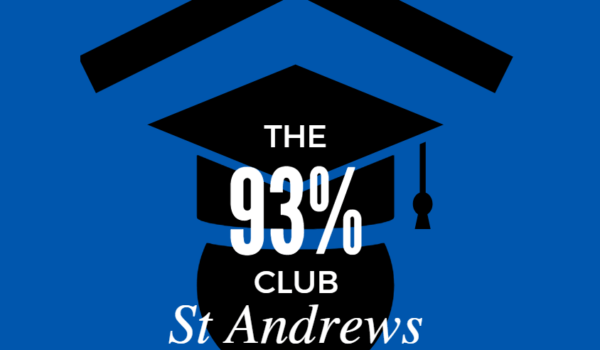The morning of the 29th of November saw the 4th global climate strike in St Andrews, accompanied by sunshine and blue skies. It began at St Salvator’s quad, where third year student and co-founder of Climate Action St Andrews, Léa Weimann, began by addressing the eager crowd. She rallied hearts with her earnest hope and belief in our power to extract change before reading a statement from the principal, Sally Mapstone.
As the president of the Wildlife and Conservation society I have had my own personal experiences with Sally Mapstone when it comes to environmental activism. In 2018, I and two other students protested the placement of a link road to be built in North Haugh. Aside from being incredibly secretive about the development, we only discovered it was happening after it had been approved, and the university was dismissive of our concerns. They brushed off the letter and petition we sent of over a hundred student signatures. We did not oppose the St Andrews West development, but only asked that it was moved to a site with lower biodiversity concerns. As it was, the university went ahead with the project, irrevocably disturbing the forty-four known protected species living in the area, as well as removing twenty-eight champion trees in the arboretum (in which many of those species resided).
With this in mind I was delighted to hear about our Principal’s change of heart, as her prepared statement proclaimed a wish that her students be ‘active, engaged, and politically-minded individuals committed to shaping the world’. The creation of the Environmental Sustainability Board, chaired by Professor Sir Ian Boyd, which aims to make St Andrews the first energy carbon neutral university in the UK, seems to be a step in the right direction. The principal’s declaration that climate change ‘must be met by action and not promises’ is one that shall be remembered, and that the university shall be held accountable for.
The principal’s statement was followed by an eloquent speech by two young students from Bell Baxter Highschool, many of whose peers had come out in support – and whose powerful voices were raised loudest during the march. The march left St Salvator’s, and progressed through the town, including the three main streets, before winding its way to West Sands, all the while yelling chants that Léa had run through with those gathered before we had set off. The energy of the group was palpable and raised high under the bright noon sun.
Upon reaching the beach, representatives of the four main political parties were present, and gave speeches on the sand amongst the marram grass. Those running in the coming general election for North East Fife, Wendy Chamberlain (Lib Dem), Stephen Gethins (SNP) and Tony Miklinski (Conservatives) all spoke, whereas Labour was represented by a student from the St Andrews Labour Society. I particularly enjoyed hearing MP Stephen Gethins speak, and was left hopeful by the view he expressed that policy involving the environment should be made with political cooperation between parties, in order to ensure policy is sustained and protected regardless of who at that time holds political office.
With this in mind, I was demoralised by the heckles and booing that met the Conservative candidate Tony Miklinski when he stepped up to talk. Regardless of your opinions on the Conservative party, 13,667,213 people in the country voted for them in the last general election. I would imagine that any conservative voter in the crowd, hitherto united by a common goal and love for the planet, felt completely isolated by the suddenly hostile atmosphere created by the booing that erupted before Miklinski had even begun to speak. As a movement that had for a long time been ignored, we should not forget to listen to what others have to say, particularly when those others might still be running the country after the 12th. Listening, followed by discussion, disagreement and debate, is key to moving forward, and we do need to move forward. As Léa said in her speech, ‘We are the generation that has to make the difference’.
After the speeches, there was a two minutes silence that was not adhered to by all, although I think this was due to those standing at the far back having not heard the call for it. Part of the reason for the strike was to raise awareness for the Kenly windfarm proposition, which involves the building of six wind turbines that would be able to power the whole university on renewable energy. The event ended with all those gathered writing their names on large pieces of paper that had been wound around the six symbolic wind turbines placed in the sand.
Thus concluded another successful addition to the series of climate strikes put on by Climate Action St Andrews. They continually manage to present the troubles facing us in a light that combines the seriousness of the issue with the hope and belief in our ability to create change. The work they do is so important, and I would encourage anyone and everyone to try and make it to their events in the future.








NIGEL CRUMP On 08/12/2019 at 12:05
An impressive and thoughtful insight about this increasingly alarming issue we should all be concerned about, well written!